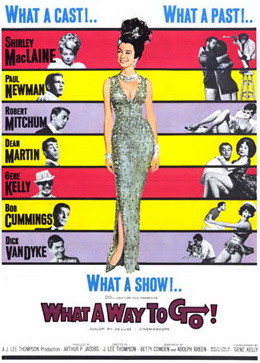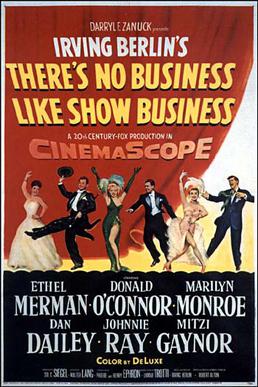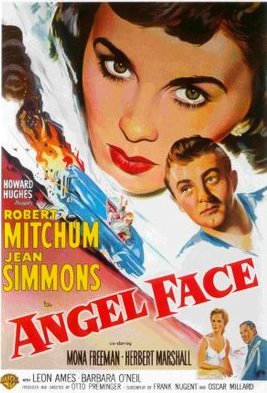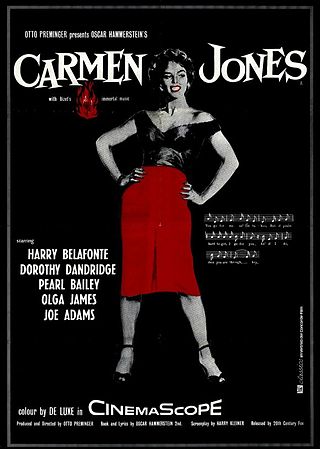
Marilyn Monroe was an American actress and model. Known for playing comic "blonde bombshell" characters, she became one of the most popular sex symbols of the 1950s and early 1960s, as well as an emblem of the era's sexual revolution. She was a top-billed actress for a decade, and her films grossed $200 million by the time of her death in 1962. Long after her death, Monroe remains a pop culture icon. In 1999, the American Film Institute ranked her as the sixth-greatest female screen legend from the Golden Age of Hollywood.

Otto Ludwig Preminger was an Austrian-American theatre and film director, film producer, and actor. He directed more than 35 feature films in a five-decade career after leaving the theatre. He first gained attention for film noir mysteries such as Laura (1944) and Fallen Angel (1945), while in the 1950s and 1960s, he directed high-profile adaptations of popular novels and stage works. Several of these later films pushed the boundaries of censorship by dealing with themes which were then taboo in Hollywood, such as drug addiction, rape and homosexuality. He was twice nominated for the Academy Award for Best Director. He also had several acting roles.

Laura is a 1944 American film noir produced and directed by Otto Preminger. It stars Gene Tierney, Dana Andrews, and Clifton Webb along with Vincent Price and Judith Anderson. The screenplay by Jay Dratler, Samuel Hoffenstein, and Betty Reinhardt is based on the 1943 novel Laura by Vera Caspary. Laura received five nominations for the Academy Awards, including for Best Director, winning for Best Black and White Cinematography.

Elizabeth Ruth Grable was an American actress, pin-up girl, dancer, model and singer.

Darryl Francis Zanuck was an American film producer and studio executive; he earlier contributed stories for films starting in the silent era. He played a major part in the Hollywood studio system as one of its longest survivors. He produced three films that won the Academy Award for Best Picture during his tenure at 20th Century Fox.

What a Way to Go! is a 1964 American black comedy film directed by J. Lee Thompson and starring Shirley MacLaine, Paul Newman, Robert Mitchum, Dean Martin, Gene Kelly, Bob Cummings and Dick Van Dyke.

Irving Berlin's There's No Business Like Show Business is a 1954 American musical comedy-drama film directed by Walter Lang. It stars an ensemble cast, consisting of Ethel Merman, Donald O'Connor, Marilyn Monroe, Dan Dailey, Johnnie Ray, and Mitzi Gaynor.

Angel Face is a 1953 American film noir directed by Otto Preminger, starring Robert Mitchum and Jean Simmons, and featuring Leon Ames and Barbara O'Neil. It was filmed on location in Beverly Hills, California.

Kidnapped (1938) is an adventure film directed by Otto Preminger and Alfred L. Werker, starring Warner Baxter and Freddie Bartholomew, and based on the 1886 novel Kidnapped by Robert Louis Stevenson.

Margin for Error is a 1943 American drama film directed by Otto Preminger. The screenplay by Lillie Hayward and Samuel Fuller is based on the 1939 play of the same title by Clare Boothe Luce.

White Witch Doctor is a 1953 Technicolor adventure film directed by Henry Hathaway and starring Susan Hayward, Robert Mitchum, and Walter Slezak. Made by 20th Century Fox, it was produced by Otto Lang from a screenplay by Ivan Goff and Ben Roberts, based on the 1950 novel by Louise Allender Stinetorf (1900-1992). The music score was by Bernard Herrmann, and the cinematography by Leon Shamroy.

Carmen Jones is a 1954 American musical film featuring an African American cast starring Harry Belafonte, Dorothy Dandridge, and Pearl Bailey and produced and directed by Otto Preminger. The screenplay by Harry Kleiner is based on the lyrics and book by Oscar Hammerstein II, from the 1943 stage musical of the same name, set to the music of Georges Bizet's 1875 opera Carmen. The opera was an adaptation of the 1845 Prosper Mérimée novella Carmen by Henri Meilhac and Ludovic Halévy.

In the Meantime, Darling is a 1944 American drama film produced and directed by Otto Preminger. The screenplay by Arthur Kober and Michael Uris focuses on a wealthy war bride who is forced to adjust to living in spartan conditions in military housing during World War II.

Under Your Spell is a 1936 American romantic comedy film with music directed by Otto Preminger. The screenplay by Frances Hyland and Saul Elkins is based on a story by Sy Bartlett and Bernice Mason. It was a remake of the American Spanish-language film, Las fronteras del amor.

The Lieutenant Wore Skirts is a 1956 American comedy film directed by Frank Tashlin and starring Tom Ewell, Sheree North, and Rita Moreno. It is a comedy about a man whose marriage begins to fail when his wife enlists.
Stanley Creamer Rubin was an American screenwriter and film and television producer born in New York City. He was the recipient of the Television Academy's first Emmy in 1949 for writing and producing an adaptation of Guy de Maupassant's "The Necklace" for the NBC TV series Your Show Time.

Marilyn: The Untold Story is a 1980 television film, about the life of the 1950s sex symbol-movie star, Marilyn Monroe. The feature stars Catherine Hicks as Monroe; Richard Basehart as her early-career agent Johnny Hyde; Frank Converse as her second husband Joe DiMaggio; Jason Miller as her third husband Arthur Miller; Kevin Geer as her first husband James Dougherty; Viveca Lindfors as her acting coach Natasha Lytess; and Sheree North as her mother Gladys Pearl Baker.

The Secret Life of Marilyn Monroe is a 2015 American drama miniseries on Marilyn Monroe. It stars Kelli Garner, Susan Sarandon, Emily Watson, Jeffrey Dean Morgan, and Eva Amurri Martino and was first aired on Lifetime on May 30 and 31, 2015. The miniseries is based on The New York Times bestseller of the same name by J. Randy Taraborrelli. It was nominated for three Creative Arts Emmy Awards

Harry Brand was an American press agent. Described as "the mastermind who made Shirley Temple the most famous child star in history, Betty Grable a GI Joe pinup girl and Marilyn Monroe a sex goddess," Brand was the head of publicity at 20th Century Fox from 1935 until 1962.

Margin for Error is a two-act play written in 1939 by Clare Boothe Luce. It is a satire of Nazism, and was staged on Broadway shortly after World War II began in Europe. The plot is a whodunit about the murder of a German consul in the United States. The play was adapted as a movie of the same name in 1943.





















